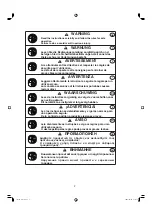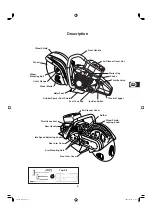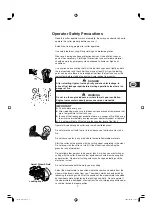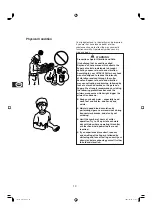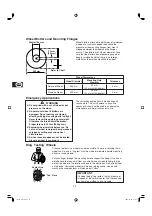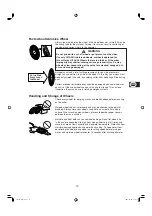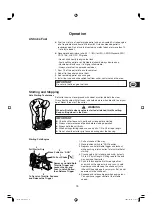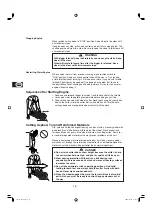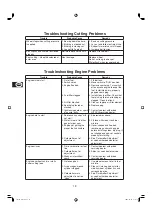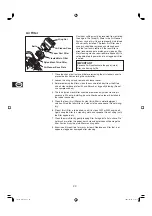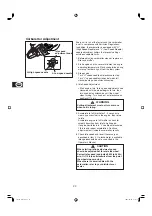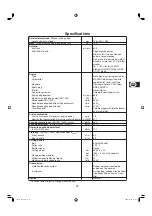
13
GB
Facts About Abrasive Wheel
Always read the label on the wheel. If the wheel does not cut well, it may be
the wrong type for the material. Forcing it to cut may result in shattering of
the wheel and serious injury to the operator.
WARNING
Do not grind with a cut-off wheel or put pressure on the sides.
Use only HITACHI reinforced wheels, or wheels approved for
this cutter by HITACHI. Wheels that are too thick or fi t the arbor
improperly may shatter, causing serious personal injury. So may
wheels of low speed rating or those that are cracked, wrapped, out-
of-round or edge-damaged.
A wheel can stand a lot of cutting pressure as long as the pressure is
straight on and not from the side of the wheel. This is why you always must
make only straight line cuts, by avoiding cutter tilt or wobbling off line during
a cut.
Cutters intended for forcible entry should be equipped with new wheels for
each use. If the used wheels can pass the ring test (page 12) and close
inspection, they may be use in training emergency crews.
Put no Side
Pressure on
the Wheel
Check every wheel for warping, cracks and broken edges before mounting
on the cutter.
Warped wheels do not cut properly and may be stressed to the point of
breaking. Always store your wheels sown fl at on a smooth, fl at and dry
surface. When stacking many wheels, place cardboard or paper spacers
between them as a cushion.
Moisture and heat both can cause wheel damage. Do not let wheels lie
in the sun or expose them to high heat. Keep wheels dry at all times, and
store in an area of low humidity and moderate temperature. Protection from
moisture damage applies during water-fl ush cutting. To keep water from
penetrating the wheel, bring wheel up to cutting speed before turning on
water, and maintain wheel rotation for 10 seconds after shutting off water.
Handling and Storage of Wheels
CM14E̲WE̲all.indb 13
CM14E̲WE̲all.indb 13
2008/02/05 21:09:31
2008/02/05 21:09:31


